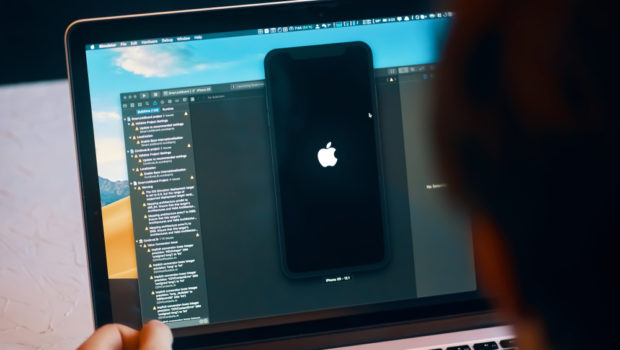9 Common Mistakes iOS Developers Don’t Know They Are Making
iOS is also the world’s second-largest mobile operating system. It also has a high acceptance rate, with over 85% of users using the most recent version. Highly active consumers, as you would imagine, have high expectations—if the app or upgrade isn’t great, you’ll hear about it.

Many engineers have moved to mobile development as the market for iOS developers continues to grow (more than 1,000 new apps are submitted to Apple every day). True iOS expertise, on the other hand, goes far beyond simple coding. Here are ten popular blunders made by iOS developers, along with tips on how to avoid them.
1. Using a Thread Other Than the Main Queue to Run UI-Related Code
Handling asynchronous code incorrectly is a very common form of error made by inexperienced programmers. Consider the following example: The table view is activated when a user opens a computer. A table view is used to show data that was obtained from the server. We should formalise it. At first glance, everything appears to be in order: we download data from the server and then update the user interface. However, since fetching data is an asynchronous process that does not return new data immediately, reloadData will be called before the new data is obtained. To correct this error, we should shift line #2 inside the block after line #1.
2. Multithreading and concurrency are frequently confused
Concurrency is equivalent to a razor-sharp knife: If you’re not careful or skilled enough, you can easily cut yourself, but once you know how to use it properly and safely, it’s incredibly useful and effective. You can try to stop using concurrency, but regardless of the type of app you’re creating, there’s a fair chance you won’t be able to do without it. Concurrency has a lot of advantages for your application. Especially noteworthy:Web resources are used in almost every application (for example, to perform some heavy calculations or read data from a database). If these tasks are completed in the main queue, the programme may freeze and become unresponsive for a period of time. Check this, if this takes too long, hiring iOS app developer will terminate the app. Through transferring these tasks to a separate queue, the user will continue to use the app while the process is being done without the app freezing.
3. Pitfalls of Mutable Objects When You Don’t Know
While Swift makes it easier to avoid mistakes with value types, many developers still prefer Objective-C. Mutable artefacts are highly dangerous and can lead to a number of issues. The rule that immutable objects should be returned from operations is well-known, but most developers don’t understand why. It’s believed that [newChildBoxes count] > [childBoxes count], but what if that’s not the case? The class is therefore badly constructed because it modifies a previously returned attribute. Experiment with UIView and [view subviews] if you believe discrimination does not exist. Fortunately, we can easily correct our code by rewriting the getter process.
4. Don’t understand how iOS NSDictionary operates.
If you’ve ever interacted with a custom class and NSDictionary, you’ll know that if your class doesn’t adhere to NSCopying as a dictionary key, you won’t be able to use it. The majority of developers have never questioned why Apple implemented the restriction. Why does Apple make a copy of the key and use it instead of the original? The trick to grasping this is to learn how NSDictionary functions on the inside. Technically, it’s nothing more than a hash table. The existence of mutable keys in NSDictionary can trigger a slew of issues. To prevent such problems, make a copy of the object before storing it, and label properties as copy.
5. Instead of XIBs, storyboards are included
Hiring iOS app developer follow Apple’s advice and use storyboards for the UI by default. However, there are several disadvantages of using storyboards, with just a few (debatable) benefits. Advantages of a storyboard (debatable):
- You can see the entire app navigation at a glance. Real-world systems, on the other hand, may have up to ten controllers connected in various directions. Such links render storyboards look like a ball of yarn and have no high-level understanding of data flows.
- Tables that are static. This is the only possible gain I can see. The issue is that during the evolution of an app, 90 percent of static tables appear to become dynamic tables.
6. Comparing Objects and Pointers May Be Perplexing
When comparing two objects, there are two forms of equality to consider: pointer and object equality. When both pointers point to the same object, this is referred to as pointer equality. When comparing two pointers in Objective-C, we use the == operator. Object equality occurs when two objects depict logically similar objects, such as the same database user. For comparing two objects in Objective-C, we use the isEqual, or even better, type specific isEqualToString, isEqualToDate, etc. operators.
7. Using Values That Have Been Hardcoded
The use of hard-coded values has two main drawbacks:
- It’s not really obvious what they stand for.
- When they need to be used in several places in the code, they must be re-entered (or copied and pasted).
#define is a preprocessor macro that adjusts the value of a named description in the code. So, if you have #define in a header file and import it elsewhere, it will overwrite all instances of the given value in that file. But for one mistake, this works well.
8. In a Switch Argument, Using the Default Keyword
In a switch comment, using the default keyword will result in bugs and unpredictable actions. This code functions correctly, allowing only admin users to make changes to other documents. However, what if we added a new user type, “manager,” who should be able to edit records as well? The code will compile if we forget to update this switch comment, but it will not function as planned. If the developer had begun with enum values instead of the default keyword, the error would have been caught at compile time and could have been corrected before going to test or output.
9. Using NSLog as a Logging Tool
Many iOS developers use NSLog for logging in their applications, but this is almost always a bad idea. If we look at the NSLog feature description in the Apple documentation. You will see all of your debug messages if you connect your computer to the Xcode organiser. For this reason, you should never log with NSLog: it’s easy to reveal confidential internal data and it looks unprofessional. Replace NSLogs with CocoaLumberjack or another logging system that can be configured.
















